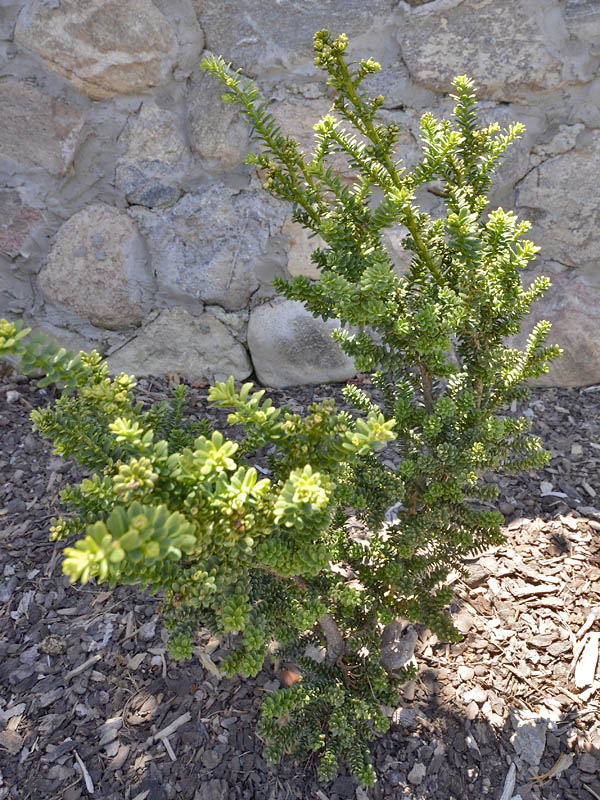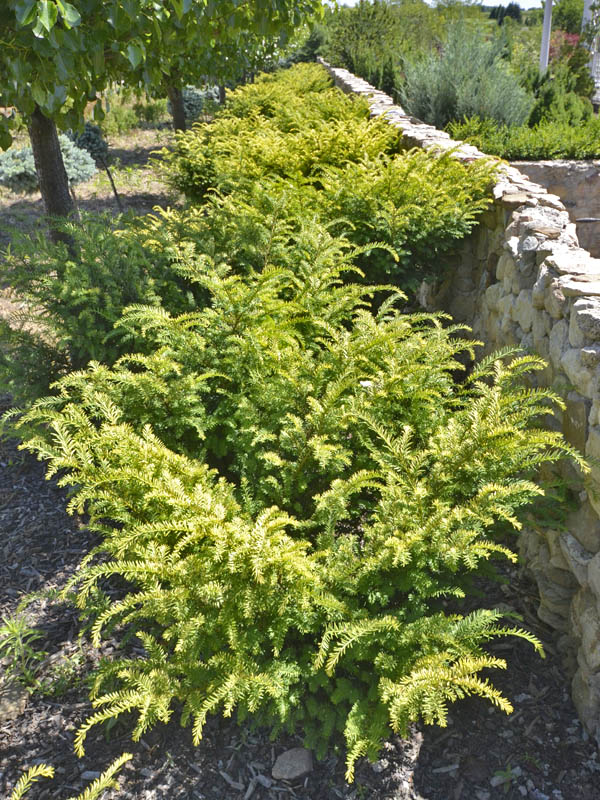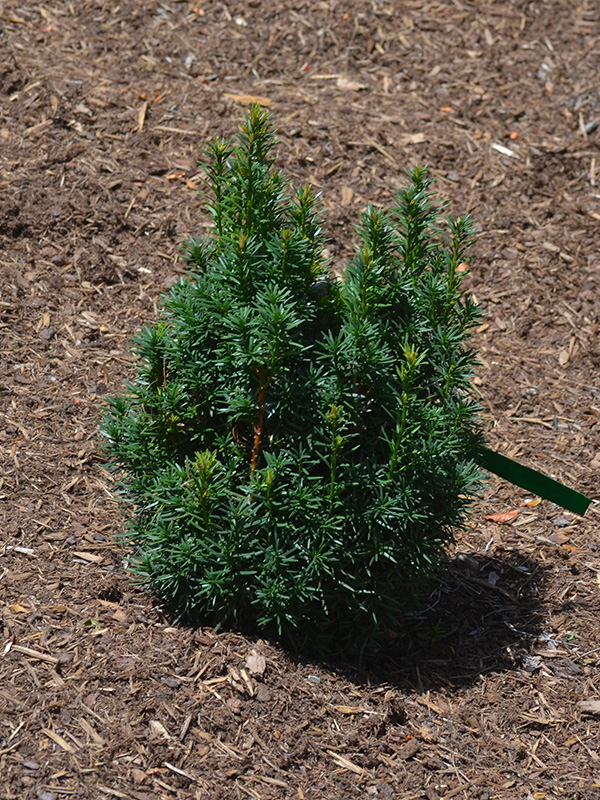
Woody > Taxus > Taxus baccata > Taxus baccata
Taxus baccata
English Yew, Irish Yew
Origin: Native to many places ranging from Europe to the Himalayas.
Mike's
Opinion


"
Not typically used in North American gardens but some cultivars are occasionally seen. A long lived, dark green, almost foreboding evergreen. One of the narrow-formed cultivars worth a try as an accent tree.
Michael Pascoe, NDP., ODH., CLT., MSc. (Plant Conservation)
"
| Family |
| Taxaceae |
| Genus |
| Taxus |
| Species |
| baccata |
| Category |
| Woody |
| Type |
| Tree (evergreen) |
| Pronunciation |
| USDA Hardiness Zone |
| 6b - 7a |
| Canadian Hardiness Zone |
| 6b - 7 |
| RHS Hardiness Zone |
| H6 |
| Temperature (°C) |
| -21 - (-15) |
| Temperature (°F) |
| -5 - 5 |
| Height |
| 10 - 20 m |
| Spread |
| 5 - 9 m |
Photographs
Description and Growing Information
Flowering Period
| General Description |
| Taxus baccata is an evergreen tree with thin, flaky, scaly and furrowed bark and dark green leaves with lustrous uppers. The best specimens are found in old English graveyards. |
| Landscape |
| Specimen, shade, and hedge. |
| Cultivation |
| Prefers moist, well-drained, acidic soil with sand and loam. Grows well with other plants since it does not compete for nutrients. It has a strong fibrous root system which makes for easy transplanting. |
| Shape |
| The outline is pyramidal. |
| Growth |
| Slow |
| ID Characteristic |
| Dense branching with a broad, rounded or shrubby form. Foliage is dark green and bark is red-brown and furrowed. Needles are 1.25 - 2.5 cm long, usually spirally arranged. |
| Pests |
| Possible problems include: Taxus mealybug and/or scale, black vine weevil and yew-gall midge. Phytophora can be problematic in damp, mild conditions. In severe winter the foliage is prone to desiccation or 'winter burn'. |
| Habitat |
| Usually found in woods and shrub atop limestone. |
| Bark/Stem Description |
| Uniquely reddish-brown, usually thin and furrowed. On mature plants the bark trunk often becomes scaly, flaky and fluted. |
| Leaf Description |
| Needles have a black-green upper and yellow-green underside, 1 - 2.5 cm long with curved margins and a prominent midrib. They are spirally arranged, spreading in erect shoots. |
| Flower Description |
| Dioecious, male strobili (cones) arise from leaf axils on the bottom of branchlets of the previous year's growth. Each branchlet consists of 6 - 14 stamens with short filaments. |
| Fruit Description |
| Fruit are olive-brown, about 5 mm long, usually biangular (rarely triangular or quadrangular). The seed-covering (arial) is red and rounded. |
| Texture Description |
| A fine to medium textured plant. |
| Notable Specimens |
| Westonbirt, The National Arboretum, Tetbury, Gloucestershire, England. Chelsea Physic Garden, London, United Kingdom. Stourhead Gardens, Wiltshire, United Kingdom. |
| Propagation |
| Usually propagated from cuttings because they root very easily. Seedlings are seldom propagated due to relatively slow growth. |
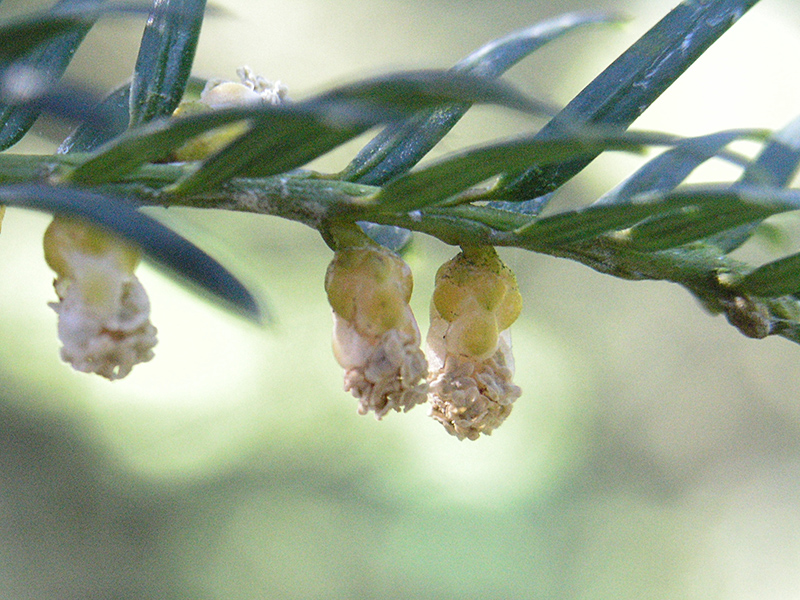
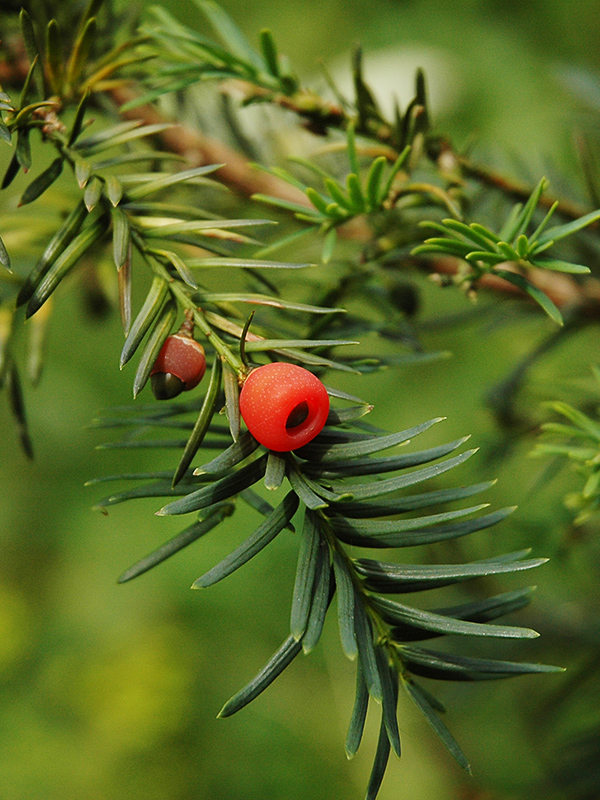
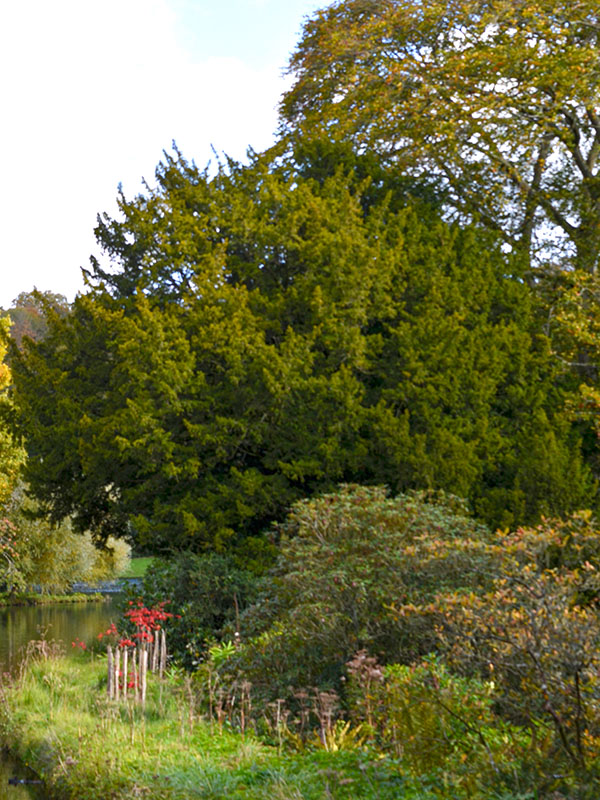
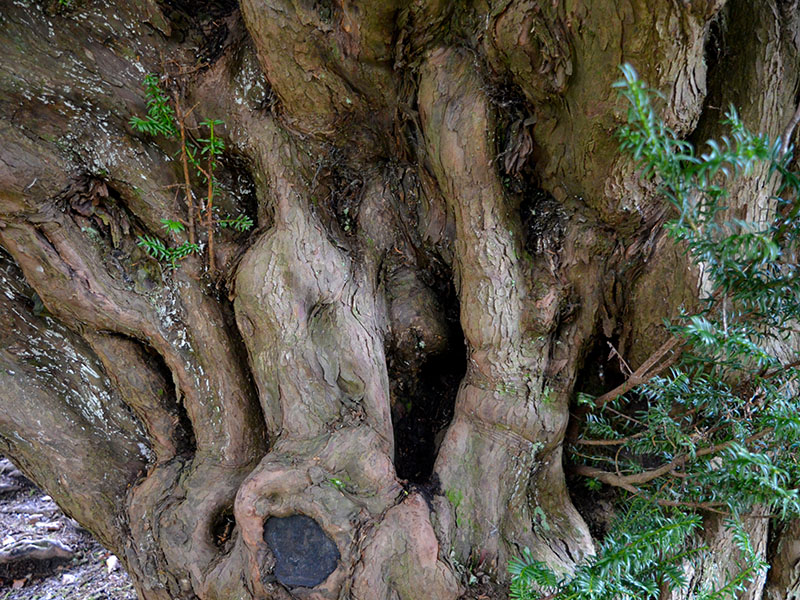
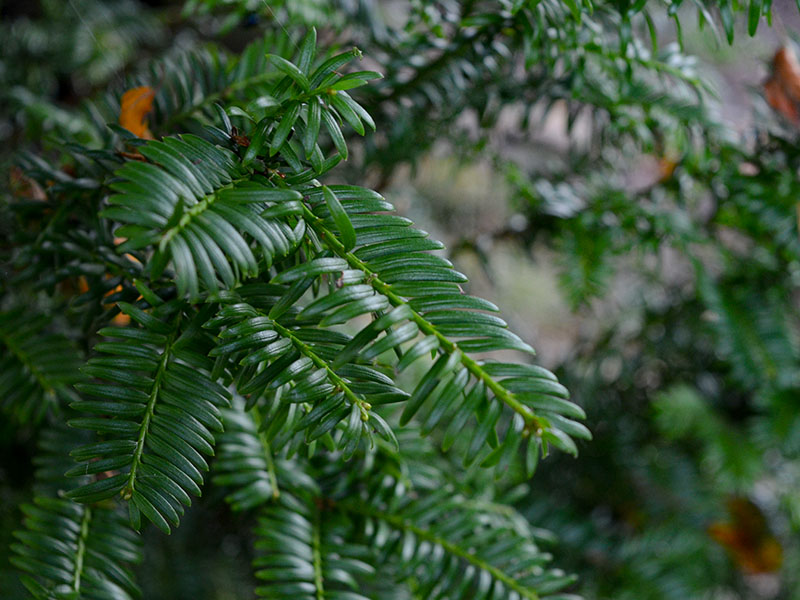
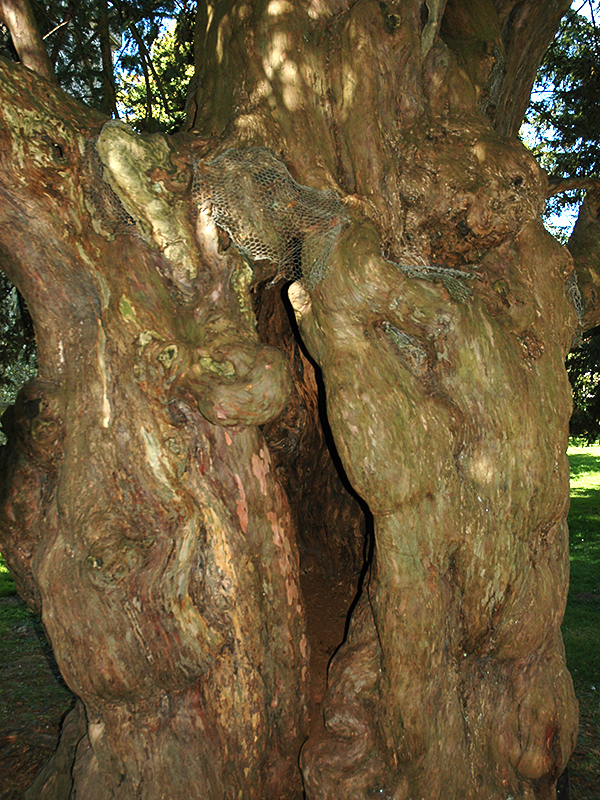
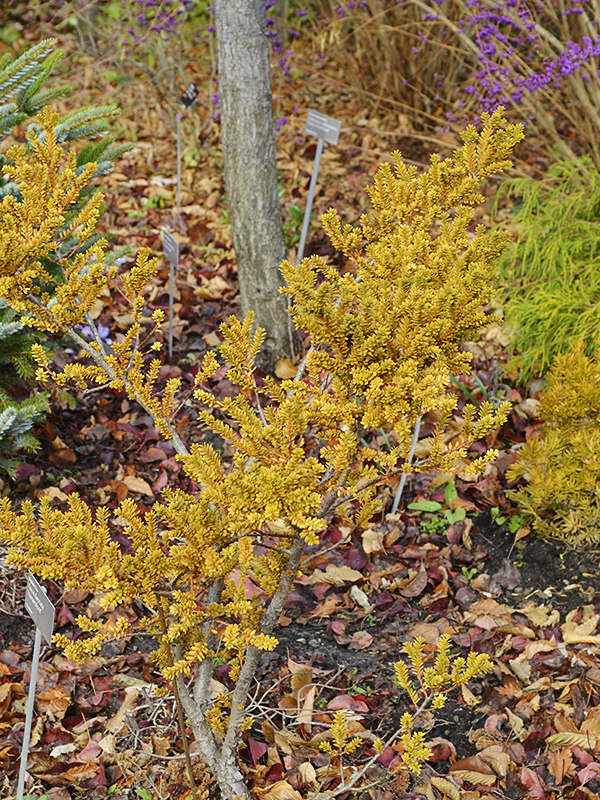
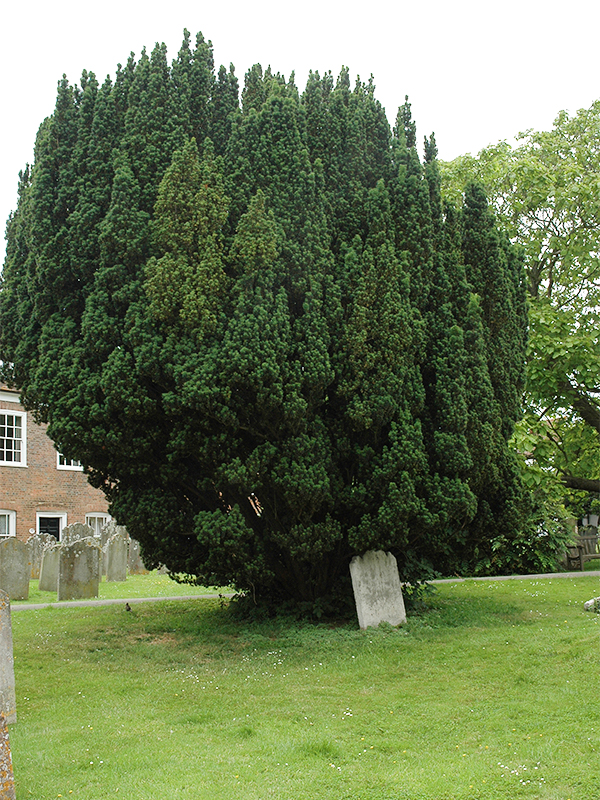
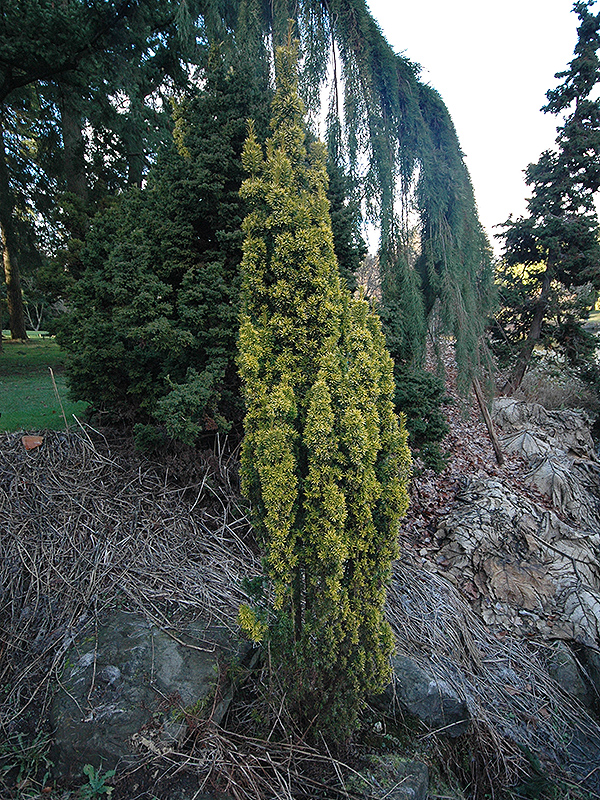
.jpg)
